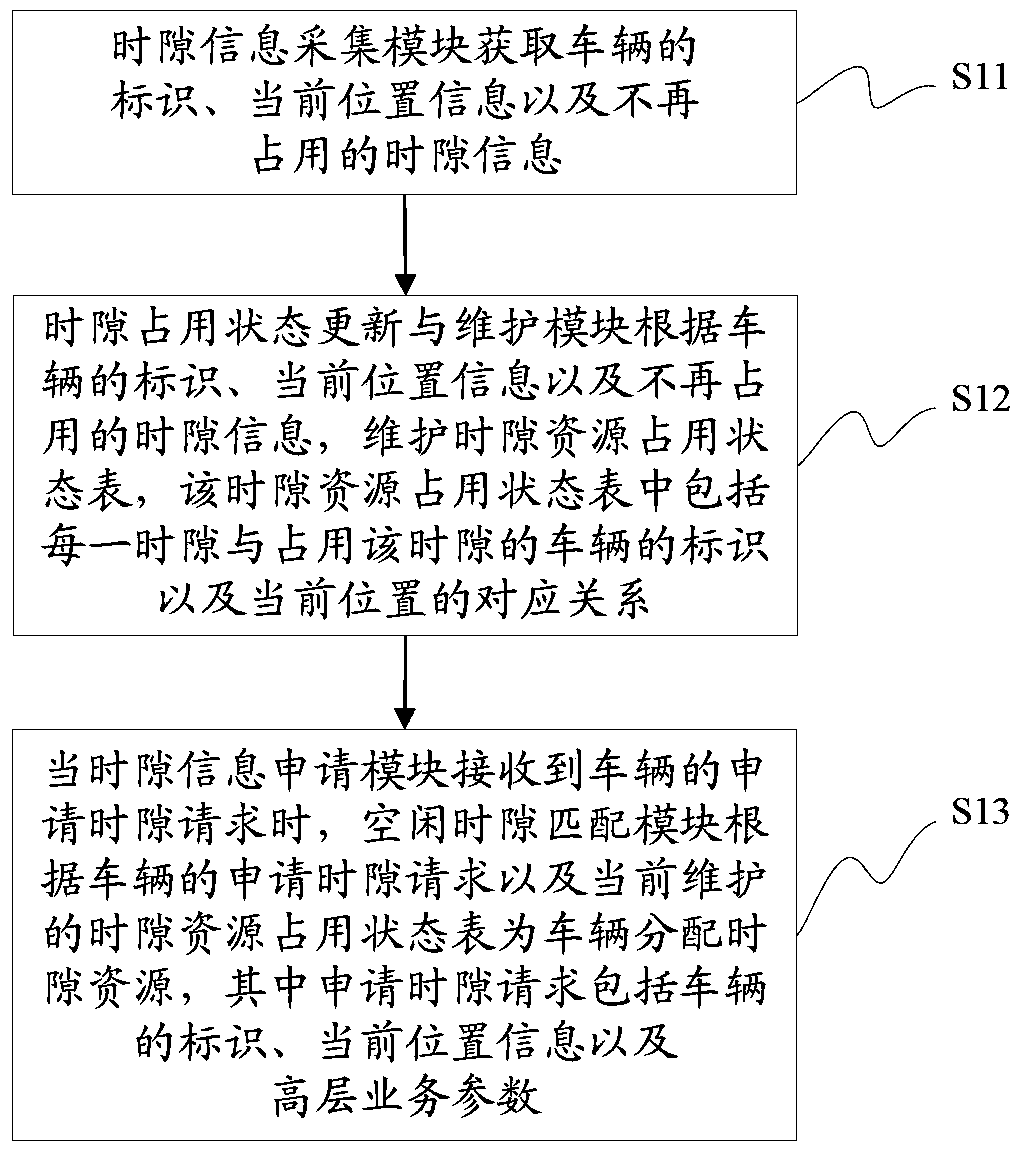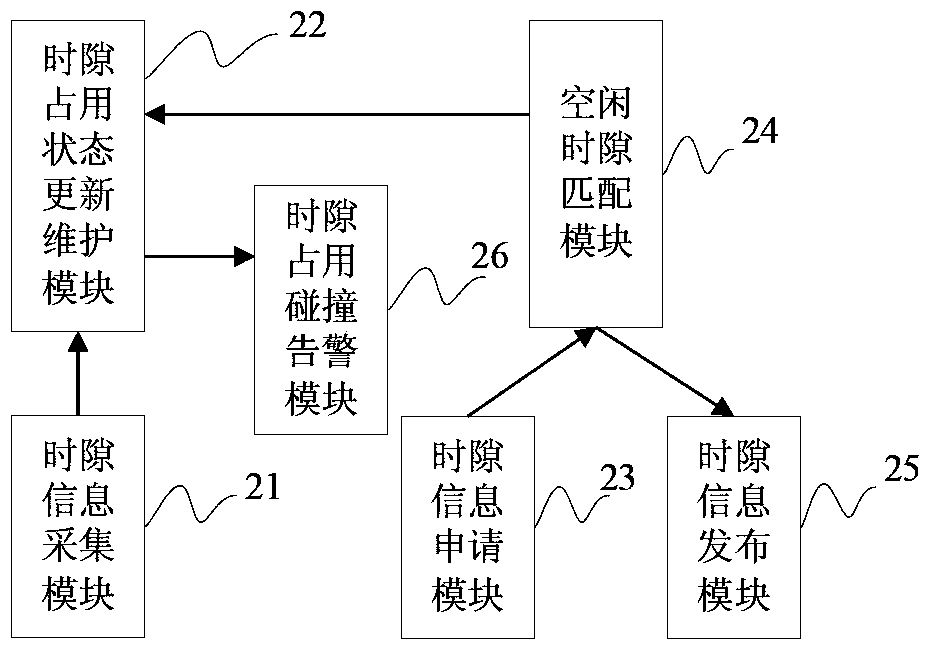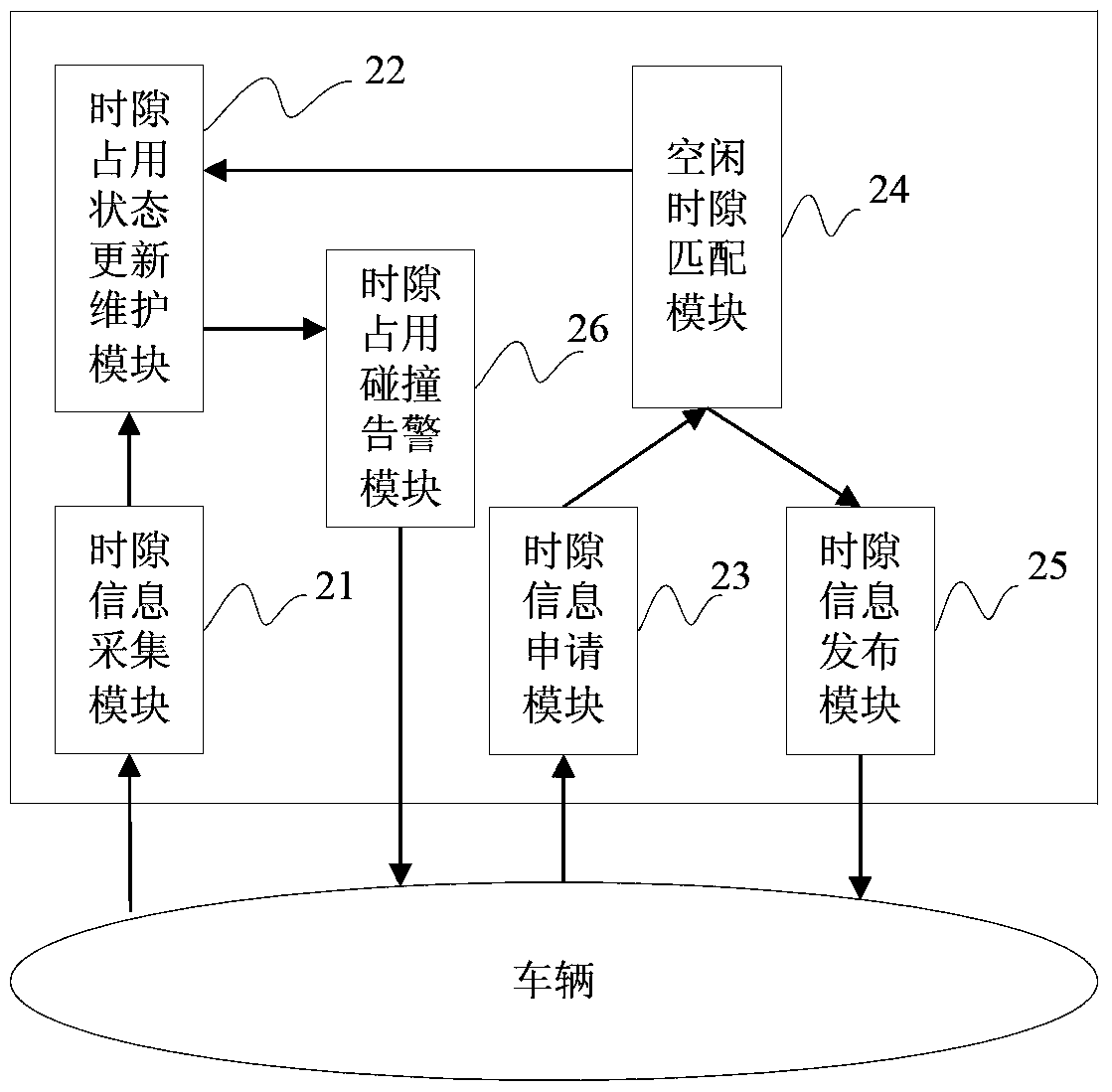A time slot allocation method and system
A time slot allocation and time slot technology, applied in the field of communication, to achieve the effect of preventing resource collisions
- Summary
- Abstract
- Description
- Claims
- Application Information
AI Technical Summary
Problems solved by technology
Method used
Image
Examples
Embodiment 1
[0059] Embodiment 1: The vehicle reports its own vehicle identification, current location information, and time slot information that is no longer occupied to the time slot information collection module in the system.
[0060] Assume that the current time slot is 2, and the time slots occupied by vehicles A, B, and C are respectively time slot 0, time slot 2, and time slot 5. The content reported by vehicle A is (vehicle identification (A), current location (A), (abandoned time slot)), if the time slot that vehicle A no longer occupies, that is, the abandoned time slot is time slot 0, the reported content is ( Vehicle identity (A), current position (A), (0)), where A represents the identity of vehicle A, and 0 represents the time slot 0 that vehicle A decides to give up.
Embodiment 2
[0061] Embodiment 2: When the high-level business of the vehicle needs to apply for a new free time slot, the vehicle sends an application to the time slot information application module in the system, and the time slot information release module in the system distributes information to the vehicle
[0062]When vehicle A receives a high-level new service data packet, for example, the maximum cache time required in the high-level service parameters is 6ms, the application information sent by vehicle A is (vehicle identification (A), current location (A), 6), where , 6 means that the maximum cache time required in the high-level service parameters is 6ms. If the system decides to allocate a new time slot 3 to vehicle A, the information released by the system to vehicle A is (vehicle ID (A), 3), where A represents the ID of vehicle A, and 3 means that the system decides to allocate a new time slot to vehicle A time slot 3.
Embodiment 3
[0063] Embodiment 3: The operation of the time slot occupancy state maintenance and update module on the time slot occupancy state table
[0064] Assuming that the current time slot is 2, and the time slots occupied by vehicles A, B, and C are respectively time slot 0, time slot 2, and time slot 5, the time slot occupancy status table is shown in Table 1:
[0065]
[0066] Table 1
[0067] If the occupied time slot of the vehicle remains unchanged, only the current position of each vehicle needs to be updated in Table 1.
[0068] If vehicle A receives time slot 3 allocated by the system for its new service in time slot 4, then in time slot 4, the time slot occupancy status table is shown in Table 2:
[0069]
[0070] Table 2
[0071] After that, if vehicle A decides to give up the self-occupied time slot 0 in time slot 6, then in time slot 6, the time slot occupancy state table is shown in Table 3:
[0072]
[0073] table 3
PUM
 Login to View More
Login to View More Abstract
Description
Claims
Application Information
 Login to View More
Login to View More - R&D
- Intellectual Property
- Life Sciences
- Materials
- Tech Scout
- Unparalleled Data Quality
- Higher Quality Content
- 60% Fewer Hallucinations
Browse by: Latest US Patents, China's latest patents, Technical Efficacy Thesaurus, Application Domain, Technology Topic, Popular Technical Reports.
© 2025 PatSnap. All rights reserved.Legal|Privacy policy|Modern Slavery Act Transparency Statement|Sitemap|About US| Contact US: help@patsnap.com



